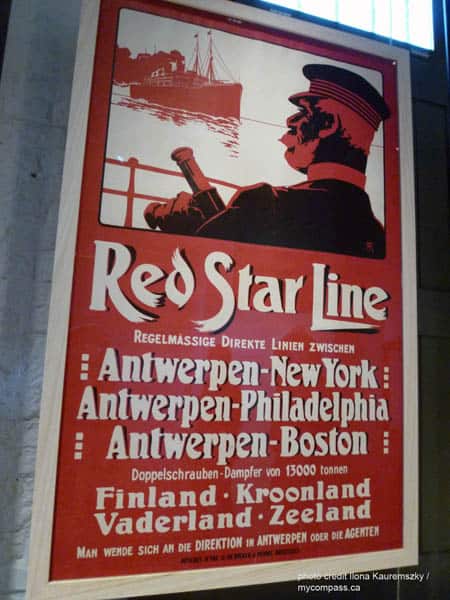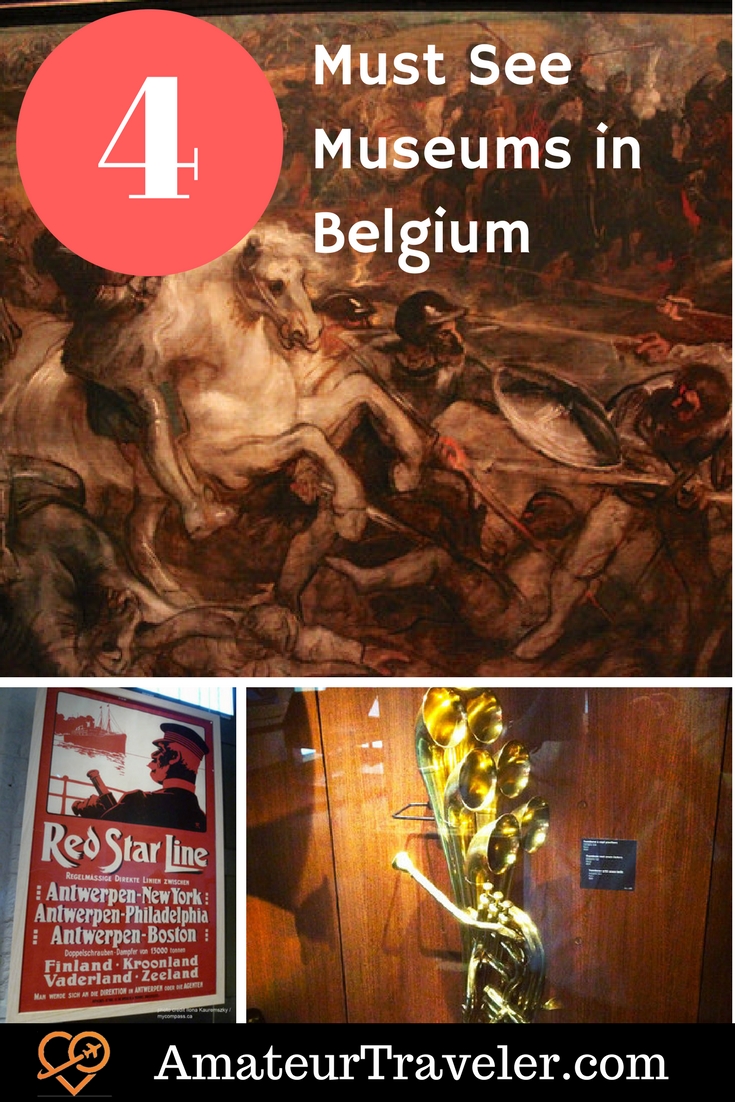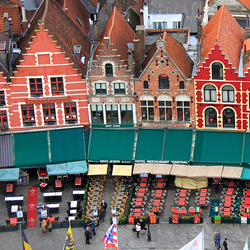I had a chance to go to 4 museums in Belgium that I think are must-see experiences.

Unfinished Painting – Ruben’s House Museum – Antwerp, Belgium
Rubens House – Antwerp, Belgium
The best known of these museums is the House of the artist Peter Paul Rubens. This small museum is both a gallery of his work as well as of the works of art he collected. In 1620 the town clerk wrote, “His home will awaken the astonishment of strangers, the admiration of travelers.”. So it is fair to say that this house has been well known for some time. The current museum opened in 1946 and oddly enough the occupying Germans helped with the restoration of the house since Rubens was born in Germany. The house and renaissance gardens themselves have been the subject of numerous pieces of art.
In the museum, you will see a number of well-known and lesser-known pieces by Rubens including one interesting unfinished work. Whether a piece is “by Rubens” is an interesting thing, because Rubens employed a number of assistants and when you commissioned a piece by him you would pay more if he painted a higher percentage of the work. Once he got to be a master painter it was probably an assistant or apprentice that would paint something like a large blue sky.

Belgium Red Star Line Museum (photo by Ilona Kauremszky / mycompass.ca)
Red Star Line Museum – Antwerp Belgium
The Red Star Line Museum opened 28 September 2013 and retells the history of the two million emigrants from Europe who sailed from Antwerp to the United States and Canada from 1873 to 1934 on the Red Star Line. This museum was a bit of a surprise for me because I expected it to focus mainly on the ship journey itself but it covered a much broader perspective. Some wonderful audiovisual and interactive elements tell you individual stories of specific families. The museum talks about why they left their homelands, how they traveled to Antwerp, all the examinations they underwent before departure and after arrival at Ellis Island or Castle Clinton, and how they fared in the new land.
Some families were escaping the pogroms against the Jews in Eastern Europe, some were driven to leave by bad harvests or unstable political situations. Copies of the letters their relatives sent them told them the streets were not paved with gold but there was opportunity. Some praised places like Chicago as “like Poland but better”, while others found adapting to their new land was more difficult. Families bought tickets not just on the boat but on the trains from the far reaches of Europe on one end to distance cities like Boston, Chicago, or Tacoma on the far end.
Emigrants had to shower for hours and be poked and prodded before they got on the ship to see if they would pass the physical in the U.S. Or Canada. If they failed the physical, the Red Star Line would have to pay the cost of repatriating them to Europe so they tried to be as thorough as possible. The stories of the new immigrants dealing with the confusion of Ellis Island were particularly poignant. What would you do if your new country rejected your daughter because she was mentally deficient? What would you do if a fungal infection kept two of your children isolated on Ellis Island for months while they were treated?
The museum can be quite crowded and a reservation is very highly recommended. The multimedia presentations have English dialog or subtitles but most of the signs in the museum do not. Take your time and savor this wonderful museum. Parents with children should be reminded that Europeans are a bit more comfortable with nudity and one theater just after the Ellis Islands section should be skipped if you don’t want your kids asking questions that may come from full-frontal nudity. There is also a tower you can climb for a view of the busy harbor. The climb to the tower is better for exercise than for the vista.

Hungarian Bagpipes – Musical Instruments Museum – Brussels, Belgium
Musical Instruments Museum – Brussels, Belgium
I was disappointed with the Belgium National Art Gallery. It has a fine collection poorly presented in a dimly lit building. But, just around the corner from that museum is a gem of a museum called the Musical Instrument Museum.
The building itself is an Art Nouveau treat but the collection is what makes me recommend this museum. There is a collection of instruments from all over the world on the 1st floor. You are given an audio guide when you enter the museum. The audio guide does not have any English words, but that is because it has no spoken commentary at all. Instead, when you walk up to an exhibit the audio guide begins to play that instrument. To say that there are a wide variety of instruments or styles of music in this world would be an understatement. One of my favorites was a set of bagpipes from Hungary.

Musical Instruments Museum – Brussels, Belgium
But my favorite exhibit is found on two higher floors which trace the history of western music in a similar fashion. The music was often quite familiar but the instruments I was looking at took, at times, quite unfamiliar shapes. Cornets (horns) that looked like they would have been at home in Roman times were playing chamber music. There were fanciful brass instruments with 7 different trumpet-like bells that looked like they came out of Doctor Seuss. The collection of stringed instruments showed that what we now think of as a piano-shaped was less obvious to early inventors. There were pyramid-shaped pianos and other fanciful configurations.
This would be a wonderful museum for kids interested in music. I did find that the audio players did not always trigger right when they should and I sometimes had to take a less direct path so that the system understood when I had moved on.

Christmas Truce – In Flanders Fields Museum – Ieper, Belgium
In Flanders Fields Museum – Ieper, Belgium
In preparation for the 100 year anniversary of WWI, the Flanders Fields Museum in Ieper’s Cloth Hall was recently renovated and expanded. The museum is a great introduction to the history of WWI, especially as it was fought in Belgium, mostly around the city of Ieper. Nearly 500,000 soldiers from 50 nations died within a few miles of this medieval city.
The museum explores the causes of the war, the path it took as it escalated. The decision of the Germans, for instance, to use poison gas for the first time and the experience of the Canadian soldiers who withstood that attack. One fascinating exhibit shows areal views of Ieper and the surrounding countryside that you can overlay with footage taken at various times during the war. You can fade from one to another as you see how Ieper, including the reconstructed Cloth Hall you are standing in, was flattened in the war, and how the surrounding countryside looked more similar to the cratered landscape of the moon than it does to pastoral Flanders.
This museum is a must for history buffs who may also want to take one of the local WWI history tours offered in Ieper.
What is your favorite museum in Europe?
+Chris Christensen | @chris2x | facebook
One Response to “Museums in Belgium – 4 Must See Art, Music and History Museums”
Leave a Reply
Tags: antwerp, article, belgium, brussels, flanders, ieper, museum

 Travel to Flanders in Belgium – Episode 399
Travel to Flanders in Belgium – Episode 399 Travel to Belgium – Episode 326
Travel to Belgium – Episode 326 Memorial Museum Passchendaele 1917 – Zonnebeke, Belgium
Memorial Museum Passchendaele 1917 – Zonnebeke, Belgium Flanders Field Revisited – My Thoughts on Remembrance Day in Flanders (Poem)
Flanders Field Revisited – My Thoughts on Remembrance Day in Flanders (Poem)

Paige Totaro
Says:November 10th, 2014 at 8:34 am
This is great! Two of these are new since my last trip to Belgium, and I think it’s time for a return visit. I was really impressed with the museums in Belgium – from the Hergé Museum (creator of Tintin) in Louvain-la-Neuve to the Magritte Museum in Brussels to the ModeMuseum in Antwerp. There is so much to see! And I never budget quite enough time there.